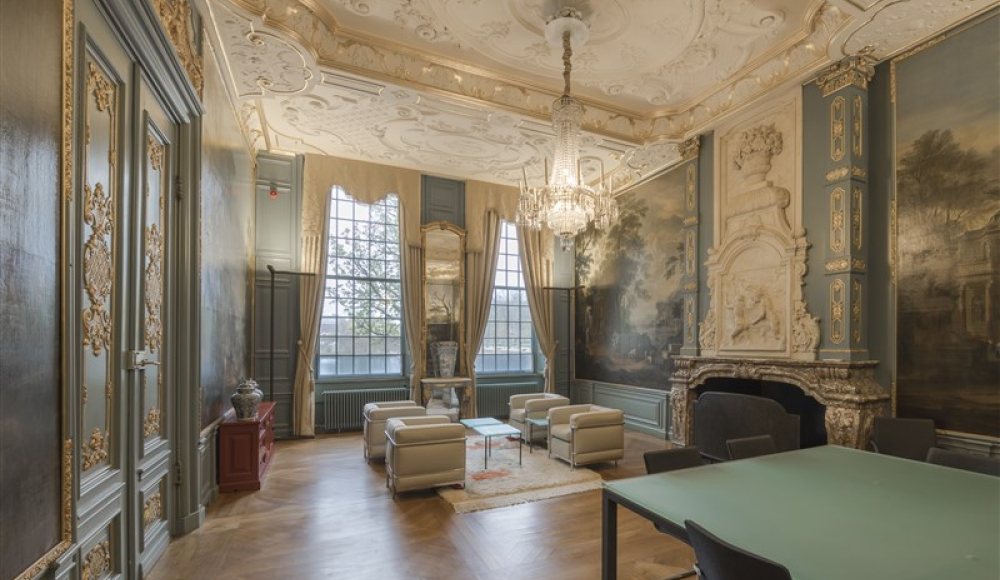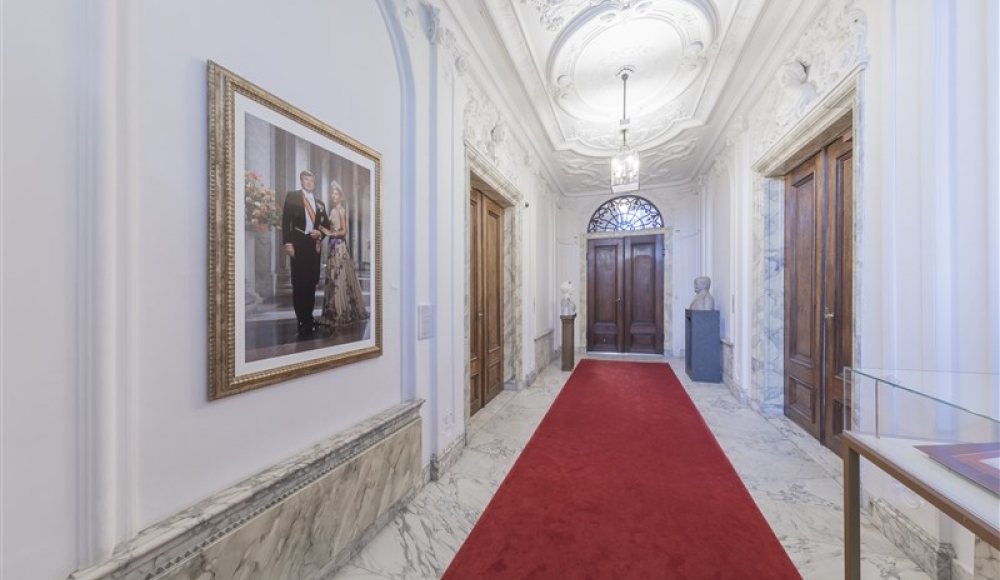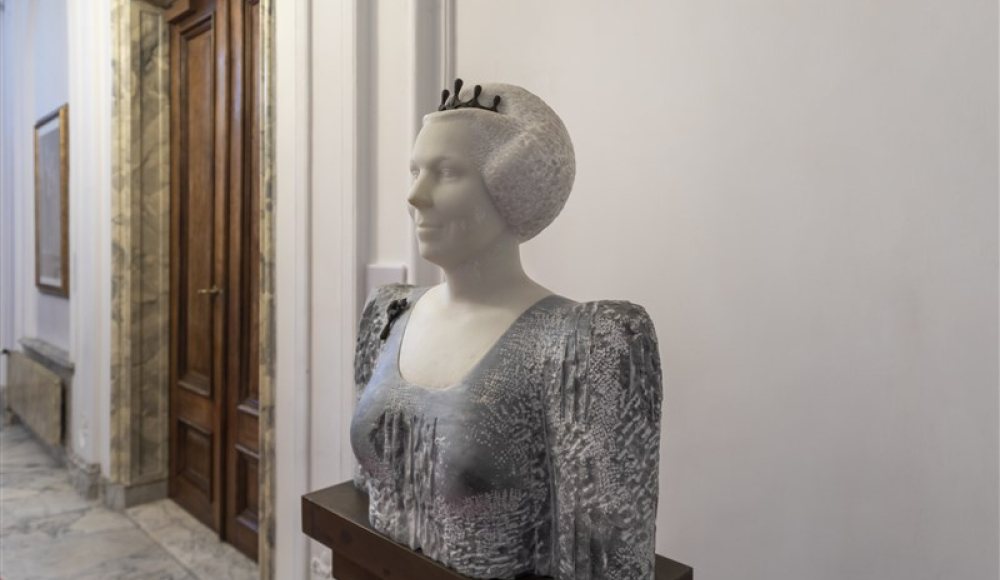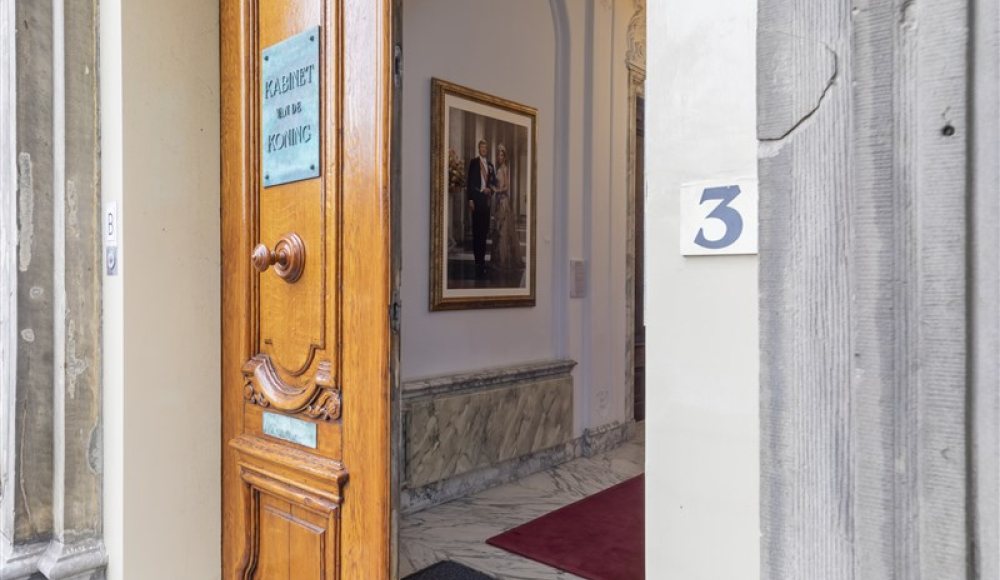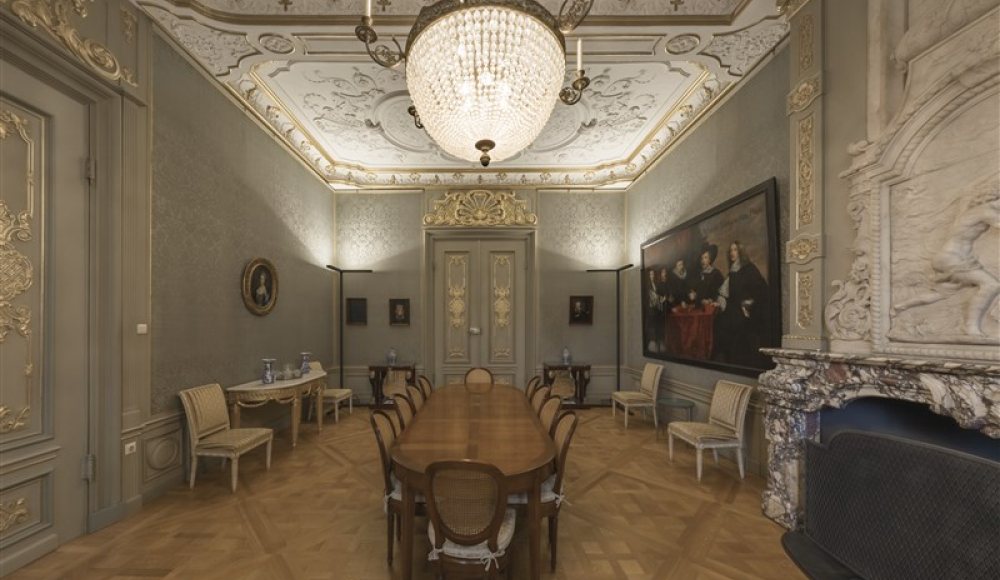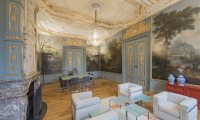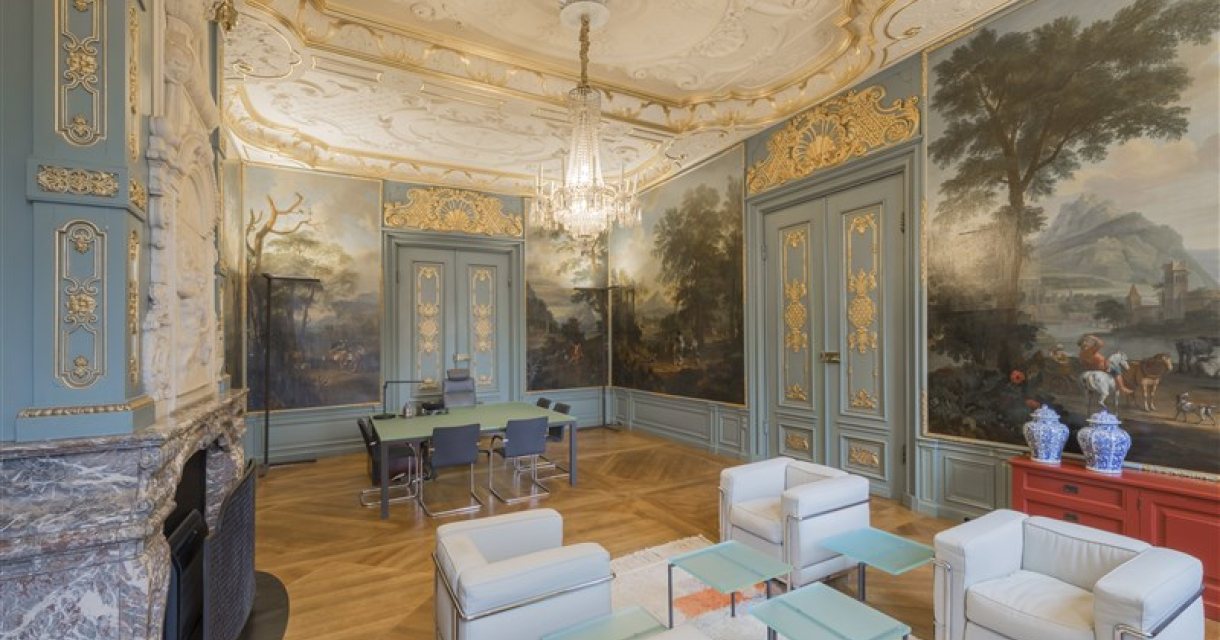
Overlooking the historic Court Pond in The Hague, The King's Office ('Kabinet van de Koning') forms a small government organisation which assists the Dutch King Willem-Alexander in the performance of his constitutional duties. It is not to be confused with Noordeinde Palace where the King actually works himself, about 700 metres further on. The beautiful house opposite the famous Mauritshuis museum is the only building in the Korte Vijverberg street that still has 17th-century features in the façade. The King's Office is not accessible to the public, except for Heritage Days in September, on which dozens of historic buildings in The Hague open their doors to the public.
History of the building
In 1633 the town of The Hague laid out a street called Korte Vijverberg on grounds belonging to the St Sebastian militia company. Reynier Pauw, a member of a powerful and influential family, purchased the plot at number 3 and had a house built on it. After he moved in, the building became known as the House of Pauw.
In 1711 Johan van Schuylenburch, member of the body charged with settling the estate of Stadholder William III, bought the house. Van Schuylenburch made alterations to his home in the style of French architect Daniel Marot. An extra floor was added, and the 17th-century façade was crowned with a sizeable cornice, balustrade and escutcheon. A balcony was constructed above the entrance. Two small garden wings were added to the rear of the building, creating a courtyard. Van Schuylenburch had the interior completely redecorated in late Louis XIV style, which has been preserved remarkably well to this day. The house still contains original wall canvases in the Cleves room, on the left-hand side of the piano nobile. They were painted in 1725 by Dirk Dalens III, one of the leading landscape painters of his day.
The Queen's Office
In 1881 the building passes to the State. The State remodelled the building to serve as the district court house, combining and furnishing the rooms on the first floor to form the courtroom. In 1914 the Queen's Office moved from its premises in the Binnenhof to the house at Korte Vijverberg 3. The basement was laid out as an archive repository, and toilets and additional space for archives were built in the courtyard.
Second World War
To protect the building during the war, iron shutters were installed, some of which were never taken down. In September 1941 the Wehrmacht requisitioned the building and set up a casino in it.
The leader of the Dutch National Socialist Movement (NSB), Anton Mussert, established his secretariat in the building in 1943, but hardly ever used it. Fleeing from the Allies in April 1945, he left his headquarters in Utrecht for The Hague, where he was arrested at Korte Vijverberg 3 on 7 May.
Mussert commissioned the architect G.A.C. Blok to restore the building. Blok's aims were twofold: to return the building as much as possible to its original state while at the same time bringing it into line with the demands of a modern office. To this end he installed central heating and modern sanitary facilities.
Replacing the Empire windows restored the original appearance, while the interior was also returned to its former glory. The early 20th-century archives annexe was demolished, making way for a French garden.
Following the liberation in 1945, the Queen's Office returned to Korte Vijverberg. The Dalens wall hangings were restored in 1956.
After the war Queen Wilhelmina wished to modernise the Office and appointed a former member of the resistance, Miss Marie Anne Tellegen, as Director. Miss Tellegen was the Office's first female director.
History of the organization
In the 17th and 18th centuries, the Stadholders, the most important officials in the Dutch Republic, had a private secretariat. Following the French occupation of the Netherlands (1795-1813), Willem I became the country's first monarch. A Private Secretariat (known as the King's Office from 1815 onwards) and a General State Secretariat were created to assist him.
Under King Willem II, the King's Office was merged with the General State Secretariat to form a new institution known as the King's Office, which from then on served as the constitutional link between the King and his ministers. This was done as part of the Royal Decree of 22 December 1840.
When the principle of ministerial responsibility was introduced in 1848, power shifted from the King to the ministers. Accordingly, the Cabinet, rather than the King, was from then on the hub of the decision-making process.
In 1891, following the accession of Queen Wilhelmina, the Office became the Queen's Office. In 2013, with the abdication of Queen Beatrix, the name changed back to the King's Office.
Present duties of the Office
Nowadays, the Office prepares hundreds of visits, receptions, meetings and swearing-in ceremonies for the King. It also processes and archives some 2,500 official document. In addition, the Office deals with thousands of letters every year from individuals and organisations addressing questions or requests to the King. These are known as petitions.
The King's Office arranges and prepares all contact between the King and the prime minister and the other members of government. It does the same for the many other meetings the King has with Dutch and foreign dignitaries, and for the swearing-in by the King of senior office-holders.
Archiving state papers
The King's Office keeps the originals of Acts of Parliament, Orders in Council and Royal Decrees, as well as other documents. Before the statutory period has elapsed, the office transfers the documents to the National Archives in The Hague. Documents held by the National Archives are in principle available for public access and serve as important sources for historical research. It was mainly for this reason that the Director of the King's Office transferred the instrument of abdication, by which Queen Beatrix relinquished the throne in 2013, to the National Archives after a much shorter period than usual.
The King's tasks
The government consists of the King and the ministers, and the King's Office serves as a link between them. As the head of state of the Kingdom of the Netherlands, the King performs a number of constitutional tasks, in which he is assisted by the King's Office. The King’s official tasks include:
- signing Acts of Parliament, Orders in Council and Royal Decrees applying to individuals or groups
- ratifying international treaties
- swearing in ministers, state secretaries and other senior officials
- acting as the ceremonial president of the Council of State
- delivering the annual Speech from the Throne at the opening of the parliamentary session on the third Tuesday in September, setting out the government’s policy plans for the coming year
In addition to these official tasks, the King fulfils a unifying, representative and encouraging role as head of state. For example, he regularly pays working visits to Dutch provinces and municipalities, and visits the islands in the Caribbean part of the Kingdom. He also makes several state visits every year. In addition, the King receives heads of state and government who are visiting the Netherlands as well as other Dutch and foreign dignitaries.
Directions
The King's Office is located in the centre of The Hague and can easily be reached both by public transport and car. From Den Haag Centraal railway station it takes 10 minutes to walk to the Court Pond. Alternatively, trams 16 or 17 are one or two stops away. The King's Office is easiest to reach by tram from Station Den Haag Hollands Spoor railway station: trams 1 and 9 (direction Scheveningen) and tram 16 stop within a few minutes' walk from the Court Pond ('Hofvijver').
When travelling by car from the A4 (Amsterdam or Rotterdam) the A12 (Utrecht) or the N44 (Leiden), follow the signs for the City Centre and then the signs for the Mauritshuis, opposite to The King's Office. The most convenient place to park is in the Pleingarage next to the Mauritshuis or in the Malieveld and Den Haag Centraal New Babylon parking garages. Both garages are about a 10-minute walk from The King's Office. The building is not open to the public.
